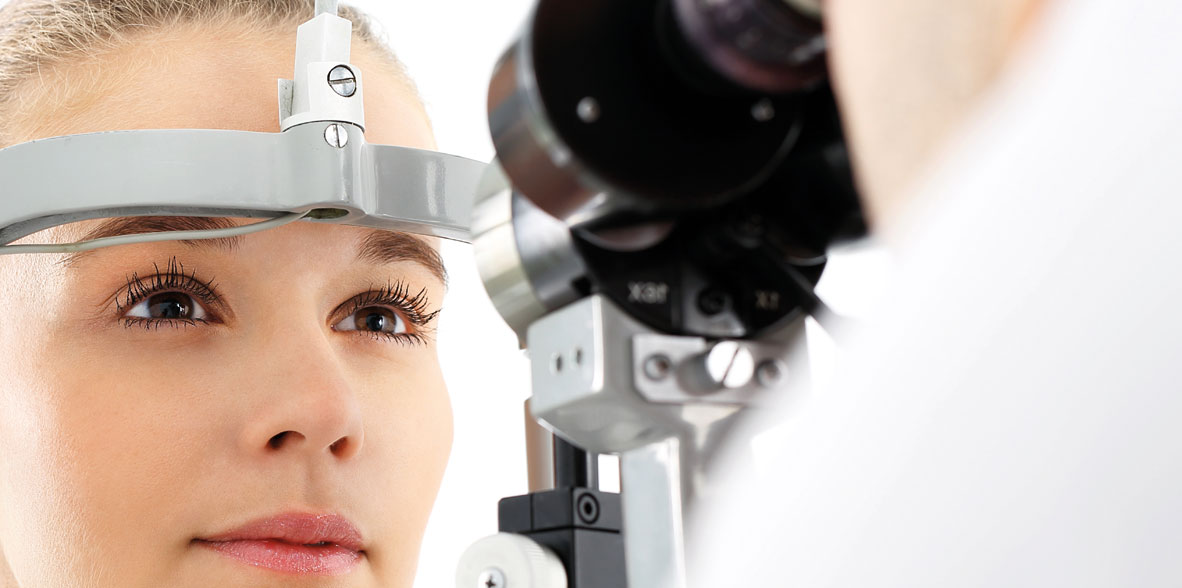

 Centro Médico Teknonen/health-centers/centro-medico-teknon
Centro Médico Teknonen/health-centers/centro-medico-teknon- Centro Médico Teknonen/health-centers/centro-medico-teknon
 Centro Médico Teknonen/health-centers/centro-medico-teknon
Centro Médico Teknonen/health-centers/centro-medico-teknon
- Who does it affect?
Roughly 2% of the population suffers from glaucoma. The condition tends to be hereditary, that is, there is more chance of a person falling foul of glaucoma if someone in the family has already had problems with it, a risk which increases with age. The greatest risk of glaucoma stems from intraocular pressure, since in most cases of the condition it has been found to be high. Myopia (short-sightedness) also holds an elevated risk.
- What happens?
The eye produces a liquid, aqueous humour, which is responsible for nourishing and cleaning the other elements within the eye. If there is an imbalance between the production and disposal of aqueous humour, the liquid builds up inside the eye, raising intraocular pressure. The weakest part of the eye, namely the optic nerve, bears the full brunt of this pressure as a consequence, becoming poorly nourished and gradually wasting away.
- What types of glaucoma are there?
Glaucoma comes in various forms: the most common one is Primary Open Angle Glaucoma (POAG). It is neither painful nor symptomatic, meaning it can go completely unobserved until the optic nerve becomes seriously damaged. The reason for this is that POAG normally gives rise to an initial intraocular pressure of 23-35 mmHg, which causes no complaints in most people. Should these levels increase, the intraocular pressure can cause headaches and/or the eyes to hurt.
Acute glaucoma (AG) is another common form of the condition, provoked by a particular defect in the person's anatomy. AG makes its presence felt initially in the form of a sharp, stabbing pain, normally in one eye, and intraocular pressure can shoot up over 50 mmHG in just a couple of hours. Urgent medical assistance must be sought after with this type of glaucoma and, once diagnosed, the treatment is to lower the intraocular pressure as quickly as possible and employ lasers to confront and ward of future attacks.
- What treatment is available?
The purpose of treatment for glaucoma is to reduce the production of aqueous humour, enable fluid drainage and shield the optic nerve. Nowadays, intraocular pressure can be kept under sound control with eye drops and surgery - both laser treatment and conventional surgery.
- And is the surgery effective?
Yes, in general. Fortunately, surgery -with or without the assistance of eye drops- can put a cap on intraocular pressure when the glaucoma is beyond the control of the medication.
- What intraocular pressure can be considered normal?
There's no such thing as a standard intraocular pressure for everyone. Here we are actually talking about the target pressure and this varies from person to person according to the condition of their eyes and of their health.
Target pressure can be defined as the type which causes no damage to the optic nerve. A test, referred to as the perimetry (the measure of the visual field), has been the conventional way to gauge damage to the nerve. This is the most standard and widely-employed form of testing to be conducted and evaluate the progression of damage to the optic nerve.A young person with no vascular problems and healthy optic nerves can perfectly withstand an intraocular pressure of, say, 25 mmHg and not witness any damage to the nerve or to their sight, whereas these fluid levels would be too high for someone else. Old people, people with diabetes and arteriosclerosis or other vascular problems, and people whose optic nerves have already encountered severe damage definitely cannot bear this same intraocular pressure: continuous decline in their visual field is sure to follow.
- Recommendations
We would like to remind you of the following standard recommendations:
- To take regular ophthalmologic tests. We can then measure your intraocular pressure and analyse the state of your optic nerve.
- Patients at risk of glaucoma (family members, the short-sighted and diabetics) must have their intraocular pressure monitored and their sight tested at least once each year.
- People over the age of 40 years must have their intraocular pressure checked at least once a year and the visual field according to the pressure and the state of their optic nerve.
- If you have already been diagnosed with and prescribed treatment for glaucoma then you must comply with it at all times. Only then will experts be able to determine whether the treatment is working as it should, whether they should modify it or whether more treatment is necessary.



































